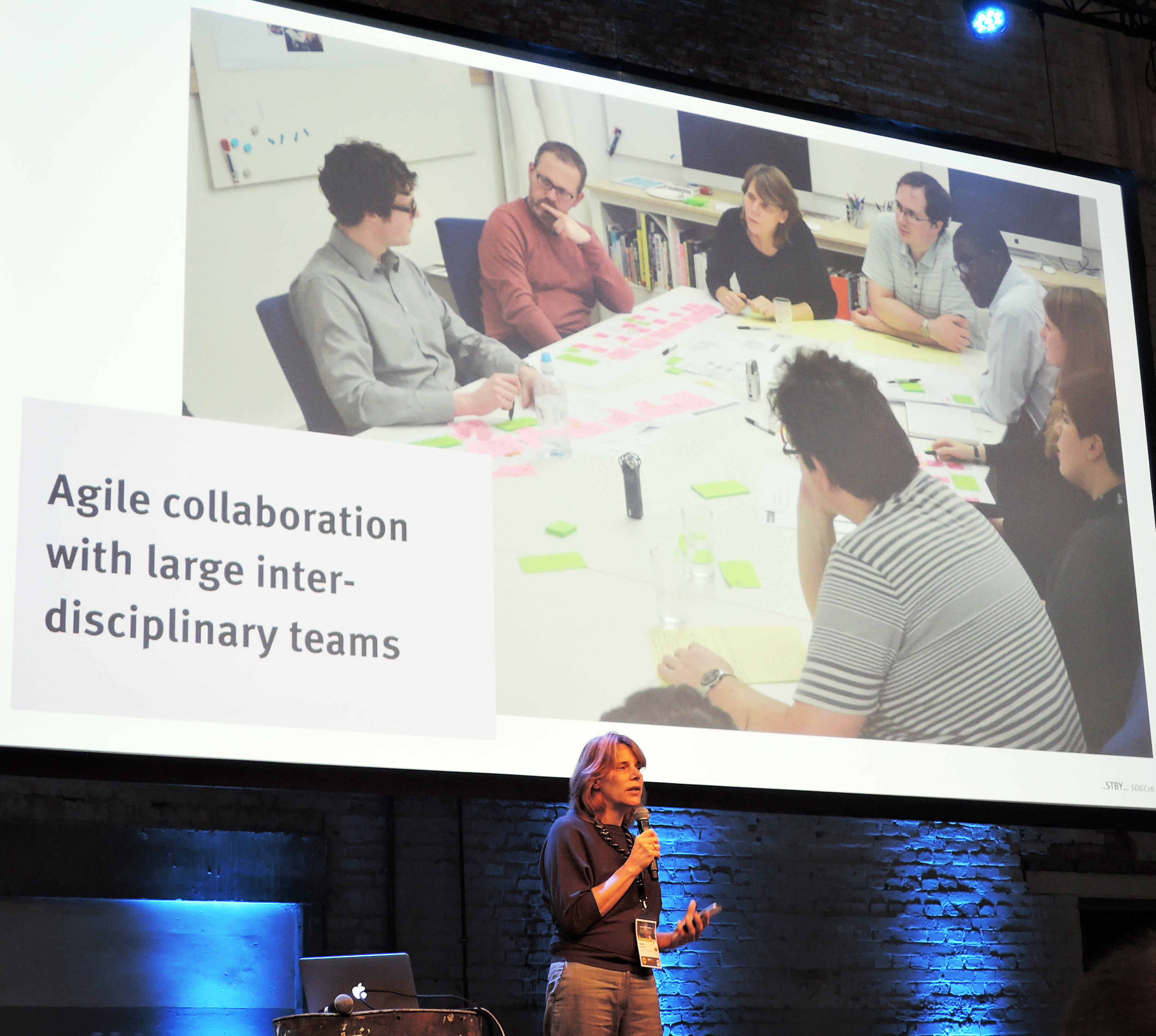On the second day of the conference I attended a session focusing on the topic of agile. The attraction for me was two of Amsterdam’s noted service design agencies coming onstage. Agile as a business environment, and effective ways to create service design in that environment was discussed through different examples.
Geke van Dijik from STBY, also the organizer and co-chair of the whole conference, referred to projects whose brief and objectives constantly shift and change, naming them “moving targets.” She claimed that being flexible and structured at the same time is important to deal with them, introducing experiences from projects with diverse stakeholders and ever-changing environments, such as in the network industries. Through each project the “structure” is refined, functioning to make their design process more agile and effective.
Harald Lamberts from Essence introduced his idea of running in parallel the two tracks of agile and long-term broader thinking, from his experience in designing for public services such as postal services or transportation. The agile track will work in brisk cycles of finding and solving problems, while the long-term, big objective will always be kept in mind and pursued, both tracks closely connected, preferably by the same person.
The word agile came up several times throughout the conference, for example as in the discussion of how to effectively deliver the essence of service design — which can require abundant time when begun from user observation — in the agile business environment, seeing it as a problem. On the contrary this session gave me the impression that the seemingly contradicting elements can not just be balanced but used to create new and more effective performances in service design.
